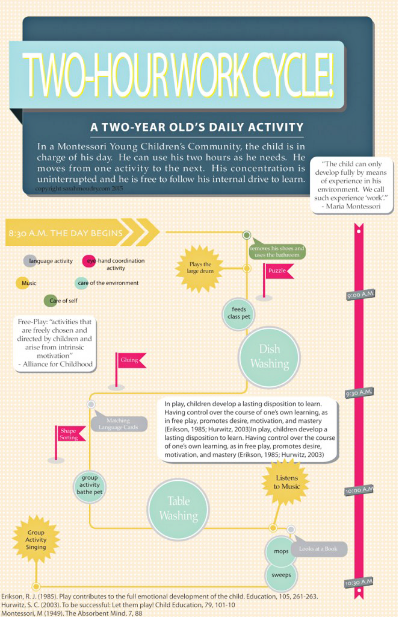October 25, 2022
The work cycle is the time, every day, the children have to work/play at school. Once a child has adapted to the routine of school, he moves from one activity to the next, with very little adult interaction. He sometimes will choose to be in a group activity, or check in with the teacher through conversation. Generally, he plans his day and proceeds with his “auto-education”. The children’s ability to do this is what allows each child the specific education they need, and each teacher has the ability to observe each child and their growth.

Here are five characteristics of play that allow the child the ability to move through his morning effortlessly, as described by Dr. Rachel E.White for the Minnesota Children’s Museum’s report, The Power of Play.
- PLAY IS PLEASURABLE. Children must enjoy the activity or it is not playing.
- PLAY IS INTRINSICALLY MOTIVATED. Children engage in play simply for the satisfaction the behavior itself brings. It has no extrinsically motivated function or goal.
- PLAY IS PROCESS ORIENTED. When children play, the means are more important than the ends.
- PLAY IS FREELY CHOSEN. It is spontaneous and voluntary. If a child is pressured, she will likely not think of the activity as play.
- PLAY IS ACTIVELY ENGAGED. Players must be physically and/or mentally involved in the activity.
When parents tour a Montessori school they often ask about the difference between play and work. Play is the work of the child. We use the term ‘work’ in order to hold it in high regard and respect it as purposeful and meaningful.
This infographic is made from the observation of one child for the full two-hour work cycle. (2 hours for 12-36 months, 3 hours for beyond 3yrs) I have used different colors and shapes to highlight the different types of activities chosen throughout the morning.